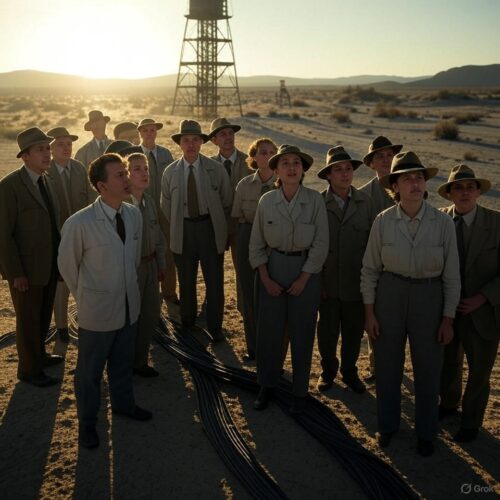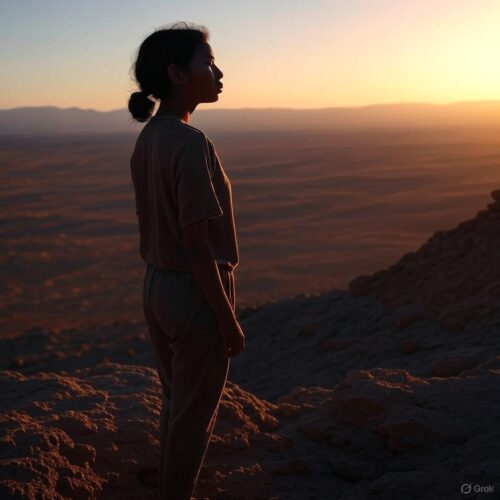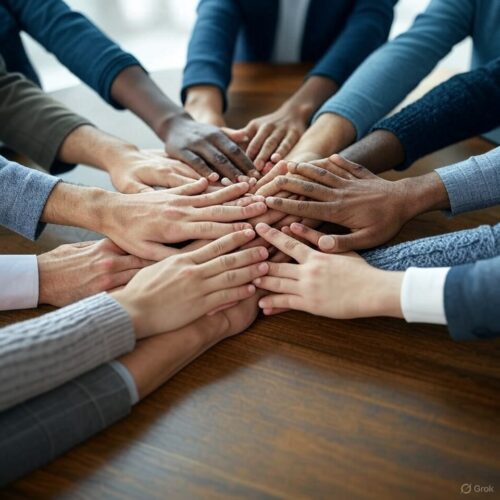On July 16, 1945, in a remote corner of New Mexico’s Jornada del Muerto desert, an extraordinary moment altered the trajectory of human history. Code-named “Trinity,” the detonation of the world’s first atomic bomb ushered in the Atomic Age. In that fleeting flash of unimaginable power, science revealed both its greatest potential and its gravest moral quandary. Today, more than seven decades later, the lessons of Trinity extend well beyond geopolitics and nuclear physics. They offer a blueprint for individual transformation: how to fuse ambition with collaboration, experiment with boldness, and wield newfound capabilities responsibly. This blog delves deeply into the Trinity Test’s technical saga, its sweeping global aftermath, and—most importantly—how you can mine its story to spark extraordinary growth in your own life.
- Genesis of the Manhattan Project
During the early 1940s, the world teetered amid global war. Refugee scientists, political urgency, and a nascent race against Nazi Germany’s potential nuclear ambitions converged in one of history’s most audacious undertakings: the Manhattan Project. Under the leadership of U.S. Army Corps of Engineers General Leslie R. Groves and theoretical physicist J. Robert Oppenheimer, more than 130,000 personnel worked in secrecy across sites in Los Alamos (New Mexico), Oak Ridge (Tennessee), and Hanford (Washington). Their mission: transmute uranium and plutonium into a devastating new weapon.
The research demanded innovations in metallurgy, shaped charges, and high-speed diagnostics. Cyclotrons and electromagnetic separators processed tons of uranium ore. Chemists refined plutonium in custom-designed reactors. Engineers developed remote handling tools to manipulate lethal materials. In less than three years, a wandering desert and makeshift laboratories birthed a device that released nearly 20 kilotons of TNT equivalent in an instant.
This story reveals a critical lesson: audacious goals often require total immersion in interdisciplinary teamwork. The Manhattan Project’s success hinged on rapid knowledge transfer—mathematicians conferring with military planners, chemists teaching engineers, and technicians correlating observational data from test blasts. When diverse minds unite behind a clear mission, breakthroughs that once seemed impossible become inevitable.
- The Countdown and the Flash
On the morning of July 16, 1945, at precisely 5:29:45 a.m. Mountain War Time, an explosive column arose from a 100-foot steel tower. The “Gadget,” a plutonium-implosion device, yielded a brilliant sphere of light and heat, visible from 200 miles. Temperatures at ground zero soared to tens of millions of degrees, vaporizing sand into green-glass trinitite. Seismographs as far as 150 miles recorded the blast’s force, and a prism-equipped camera captured the fireball’s expansion at 10,000 frames per second.
That single detonation crystallized decades of theoretical work into tangible power, raising ethical questions still unresolved today. The Trinity Test’s success propelled two atomic bombings over Hiroshima and Nagasaki barely a month later, hastening the end of World War II. Simultaneously, it unleashed a nuclear arms race that defined Cold War geopolitics. Underpinning these outcomes were decisions made in the desert: to test, to deploy, and to harness the atom’s might at unprecedented scale.
 III. Reverberations Across the Globe
III. Reverberations Across the Globe
The Trinity explosion was more than a scientific milestone; it was a geopolitical pivot. On August 6 and 9, 1945, “Little Boy” and “Fat Man” devastated Hiroshima and Nagasaki. Japan surrendered on August 15, altering global power balances. The Soviet Union accelerated its own atomic program, setting the stage for decades of nuclear brinkmanship. Public awareness of atomic energy spurred peaceful uses—nuclear power plants, radiotherapy for cancer, and agricultural crop enhancement—but also prompted fears of total annihilation.
Countries formed nonproliferation treaties, debate ignited over civil liberties versus state security, and the world watched mushroom clouds as symbols of both promise and peril. Scientific hubs flourished—national labs at Livermore and Chalk River, CERN’s groundwork in Europe—but so too did polarized politics. From the Cuban Missile Crisis to modern diplomatic rounds on Iran’s nuclear program, Trinity’s legacy tangles innovation, ethics, and human survival.
Through it all, one lesson stands clear: ground-breaking discoveries shape entire eras. When you pioneer a new approach in your career or creative life, anticipate ripple effects. How will stakeholders respond? What new responsibilities emerge? Trinity teaches us that invention and stewardship are inseparable.
- Inside the Crucible of Innovation
Beyond the shock and awe of the blast lies a masterclass in process design:
- Vision and Urgency
Albert Einstein’s warnings and fear of Axis nuclear armament galvanized urgency. A compelling vision unites disparate experts under a shared imperative. - Modular Experimentation
Scientists conducted smaller criticality tests before full-scale detonation. These “tick tests” revealed implosion dynamics, allowing iterative refinements. - Integrated Communication
Weekly intelligence-gathering, cross-disciplinary meetings, and encrypted dispatches ensured findings flowed freely between sites. Bottlenecks vanished. - Resource Flexibility
The U.S. government funneled unprecedented funding. If a novel instrument was needed, procurement was immediate—no months-long red tape. - Ethical Review (Post-Factum)
Only after Trinity did formal morality debates begin. Today, you can learn from this misstep: embed ethics discussions throughout an innovative project, not after its completion.
 Translating Trinity into Personal Mastery
Translating Trinity into Personal Mastery
The Trinity Test’s story brims with applicable insights for your own growth journey. Here’s how to channel that desert-borne dynamism into sustainable progress:
- Forge Your “Manhattan Project”
Assemble a diverse task force for your next big goal—whether launching a side hustle, writing a book, or reorganizing your life habits. Aim for complementary skill sets: visionary planners, detail-oriented executors, and creative problem solvers. - Prototype Relentlessly
Adopt a “tick test” mindset. Before jumping into full-scale deployment, run scaled-down experiments. If you’re revamping your morning routine, trial one change at a time: wake up fifteen minutes earlier, swap your coffee for tea, or meditate for five minutes. Observe results, refine, iterate. - Build Transparent Channels
Mimic Manhattan Project’s open-knowledge ethos. Use shared documents, regular briefings, and collaborative notifications. When your team (even if it’s just you and a mentor) stays aligned, breakthroughs accelerate. - Secure Resources in Advance
Identify what you need—tools, courses, funding, or time slots—and acquire them before you begin. Create contingency buffers: time-block work sessions, pre-purchase subscriptions, or draft a budget for materials. - Integrate Moral Checkpoints
At Trinity, ethics lagged behind technical capability. In your projects, schedule recurring reflection meetings. Ask: “Will this choice benefit or harm others? Does it align with my values? What’s the worst-case scenario?” These questions guide you toward responsible innovation.
 A Plan for Personal Fusion
A Plan for Personal Fusion
Below is a structured, six-week blueprint that infuses Trinity’s principles into your routine. Tailor each step to your own project, goal, or habit transformation.
Week 1: Vision & Coalition
- Define your “Gadget”—the core deliverable or outcome.
- List five skills required; recruit or partner with people who bring those skills.
- Draft a mission statement: why this matters, and what success looks like.
Week 2: Baseline & Pilot
- Document your current processes. Measure time spent, resources used, and outputs produced.
- Design a minimum viable experiment (MVE) that tests one critical variable.
- Run the MVE for three days, logging results meticulously.
Week 3: Debrief & Iterate
- Convene a “post-mortem” on the MVE. Celebrate wins. Identify failure modes.
- Adjust the experiment. Expand or pivot focus.
- Set measurable goals: reduce friction by 20%, increase output by 10%.
Week 4: Scale Up & Resource Deployment
- Acquire any additional tools, workspace hours, or budget needed.
- Scale the refined experiment to a half-scale pilot over one week.
- Document key metrics daily: mood, productivity, deliverable progress.
Week 5: Ethical Audit & Stress Test
- Host an ethics review. Gather feedback from colleagues, mentors, or stakeholders.
- Analyze potential unintended consequences. Draft mitigation strategies.
- Conduct a “stress run” under simulated high-pressure conditions to test resilience.
Week 6: Full Launch & Legacy
- Finalize your process playbook, codifying successful steps and guardrails.
- Announce your launch to a broader audience—social media, newsletter, or community forum.
- Institute a quarterly review cycle: assess impact, iterate enhancements, and mentor others.
VII. Maintaining the Momentum
After Week 6, momentum can wane. To sustain trinity-style rigor:
- Monthly Fusion Huddles: 30-minute syncs with your inner circle to share progress and recalibrate.
- Annual Retrospective: A day devoted to reviewing the last twelve months, celebrating major breakthroughs, and setting bold vision goals for the next year.
- Mentorship Ripples: Teach someone your process. Explaining complex systems refines your understanding and generates fresh insights.
 VIII. Embracing the Moral Dimension
VIII. Embracing the Moral Dimension
The Trinity Test teaches us that power without reflection can lead to catastrophe. In every personal or professional endeavor:
- Ask “Why?” as often as you ask “How?”
- Recognize that speed and scale must be matched with empathy and foresight.
- Honor your work’s broader impact on communities, environments, and future generations.
By embedding ethical signposts into your workflow—just as bioethicists now monitor genetic research—you ensure your innovations uplift rather than harm.
- From Blast Radius to Positive Ripples
The desert flash that forever changed warfare also illuminates how human ingenuity, when harnessed thoughtfully, can transform lives. As you embark on your next big venture—be it a creative masterpiece, a groundbreaking app, or a personal reinvention—remember how Trinity blended vision, collaboration, experimentation, and conscience. Let that desert light guide your path, forging outcomes that echo far beyond your immediate circle, just as one morning in 1945 reverberated around the globe.
 In the end, greatness often germinates in isolation—a remote site, a quiet lab, or the uncharted terrain of your own aspirations. July 16 reminds us that the same spark that unlocked the atom can ignite personal revolutions. Your life’s “Trinity Test” awaits. Fuse passion with discipline, prototype with purpose, and let the desert fire of possibility illuminate every step forward.
In the end, greatness often germinates in isolation—a remote site, a quiet lab, or the uncharted terrain of your own aspirations. July 16 reminds us that the same spark that unlocked the atom can ignite personal revolutions. Your life’s “Trinity Test” awaits. Fuse passion with discipline, prototype with purpose, and let the desert fire of possibility illuminate every step forward.

